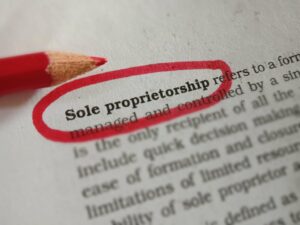
A higher Car Dealership Accounting ratio indicates prompt payments, while a lower ratio may suggest potential cash flow issues. Under International Financial Reporting Standards (IFRS), accounts payable are recognized at fair value, ensuring financial statements accurately reflect obligations. Working capital is calculated from the assets and liabilities on a corporate balance sheet, focusing on immediate debts and the most liquid assets. Calculating working capital provides insight into a company’s short-term liquidity and efficiency. A company with positive working capital generally has the potential to invest in growth and expansion.
- Create subtotals for total non-cash current assets and total non-debt current liabilities.
- The following information has been taken from the balance sheet of ABC Company.
- A higher ratio suggests effective control, which contributes positively to NWC.
- For instance, retail businesses often have negative NWC due to rapid inventory turnover and supplier credit terms.
- And then, we need to find the difference between the current assets and the current liabilities as per the net working capital equation.
Is Negative Working Capital Bad?
It provides insights into how effectively a company can meet its current liabilities with its current assets, making it an essential tool for assessing financial health. Keep in mind that a negative number is worse than a positive one, but it doesn’t necessarily mean that the company is going to go under. It’s just a sign that the short-term liquidity of the business isn’t that good.

Current Liabilities
For example, inventory valuation can vary depending on accounting methods like FIFO (First-In, First-Out) or LIFO (Last-In, First-Out), which directly affect the outcome. Similarly, the timing of accounts receivable collections and accounts payable settlements impacts the calculation. Many companies use financial software to ensure their NWC figures reflect the latest financial data. A company can improve its working capital by increasing current assets and reducing short-term debts. To boost current assets, it can save cash, build inventory reserves, prepay expenses for discounts, and carefully extend credit to minimize bad debts.
- Populate the schedule with historical data, either by referencing the corresponding data in the balance sheet or by inputting hardcoded data into the net working capital schedule.
- Therefore, the impact on the company’s free cash flow (FCF) is +$2 million across both periods.
- The quick ratio provides a sharper focus on liquid assets compared to the broader current ratio.
- The rationale for subtracting the current period NWC from the prior period NWC, instead of the other way around, is to understand the impact on free cash flow (FCF) in the given period.
- A positive NWC suggests the company has a buffer to handle unexpected expenses or invest in growth opportunities.
Register your business
This means the company has $70,000 at its disposal in the short term if it needs to raise money for any reason. The net working capital formula is calculated by subtracting the current liabilities from the current assets. While this is concerning for most businesses, some industries (like retail) operate effectively with negative NWC.
- A large positive measurement could also mean that the business has available capital to expand rapidly without taking on new, additional debt or investors.
- Net Working Capital (NWC) is a financial metric that reflects a company’s short-term liquidity and operational efficiency.
- Alternatively, it could mean a company fails to leverage the benefits of low-interest or no-interest loans.
- Working capital is the amount of liquid assets a company has available, after accounting for its upcoming payments.
- Since the company is holding off on issuing payments, the increase in payables and accrued expenses tends to be perceived positively.
- Explore comprehensive analyses, historical data, and compare the company’s NWC performance against competitors.
We have been given both current assets and current liabilities in the above example. The net working capital is calculated by simply deducting all current liabilities from all current assets. Still, it’s important to look at the types gross vs net of assets and liabilities and the company’s industry and business stage to get a more complete picture of its finances. The NWC metric is often calculated to determine the effect that a company’s operations had on its free cash flow (FCF).
![]()
Simply put, Net Working Capital (NWC) is the difference between a company’s current assets and current liabilities on its balance sheet. It is a measure of a company’s liquidity and its ability to meet short-term obligations, as well net working capital equals as fund operations of the business. The ideal position is to have more current assets than current liabilities and thus have a positive net working capital balance.
Can Net Working Capital be negative?

The company has a claim or right to receive the financial benefit, and calculating working capital poses the hypothetical situation of liquidating all items below into cash. The amount of working capital needed varies by industry, company size, and risk profile. Industries with longer production cycles require higher working capital due to slower inventory turnover. Alternatively, bigger retail companies interacting with numerous customers daily, can generate short-term funds quickly and often need lower working capital. The textbook definition of working capital is defined as current assets minus current liabilities. The rationale for subtracting the current period NWC from the prior period NWC, instead of the other way around, is to understand the impact on free cash flow (FCF) in the given period.